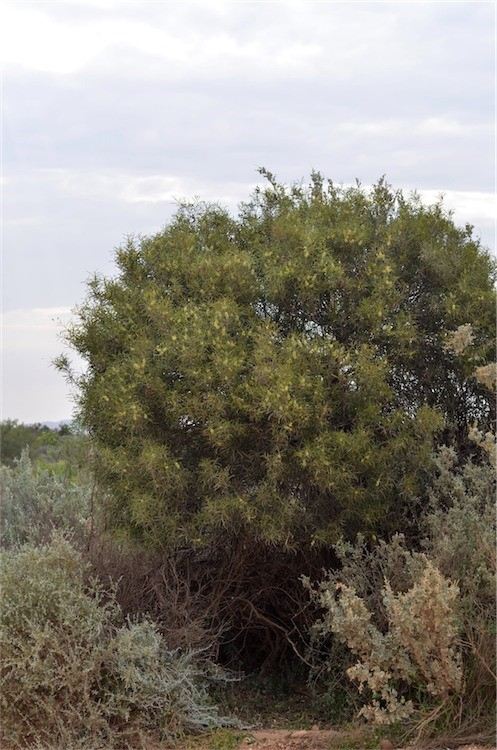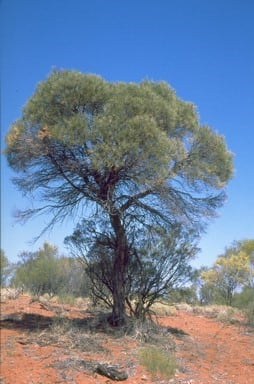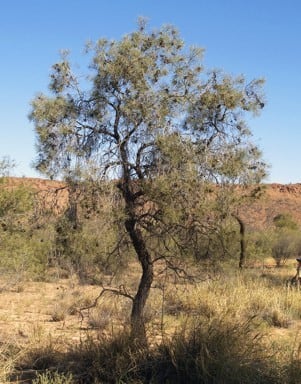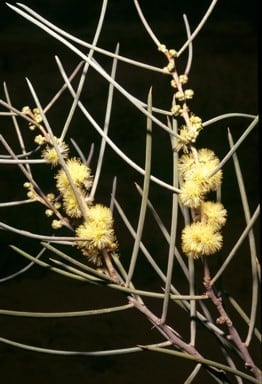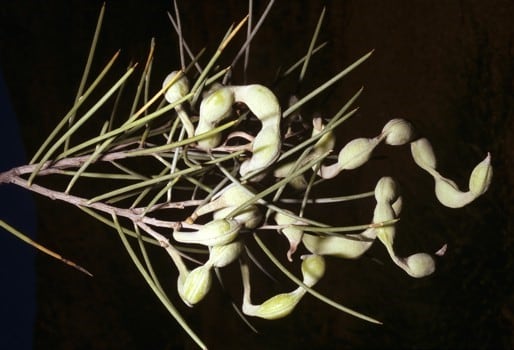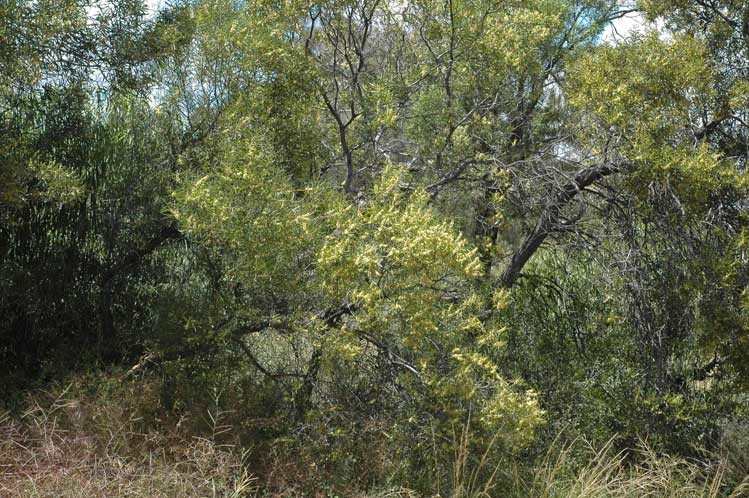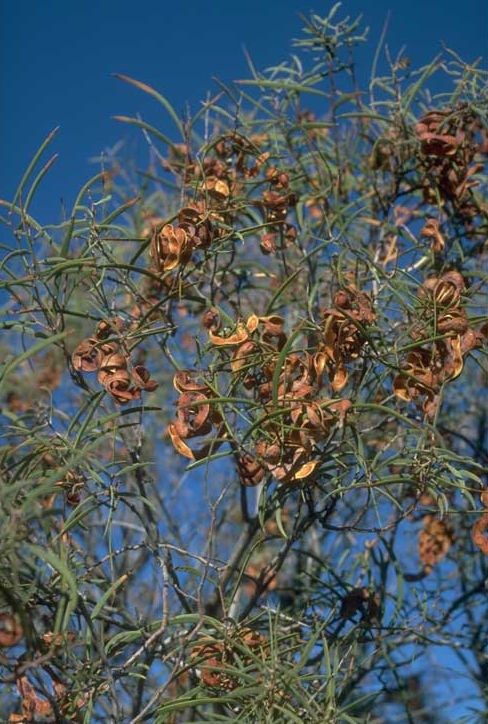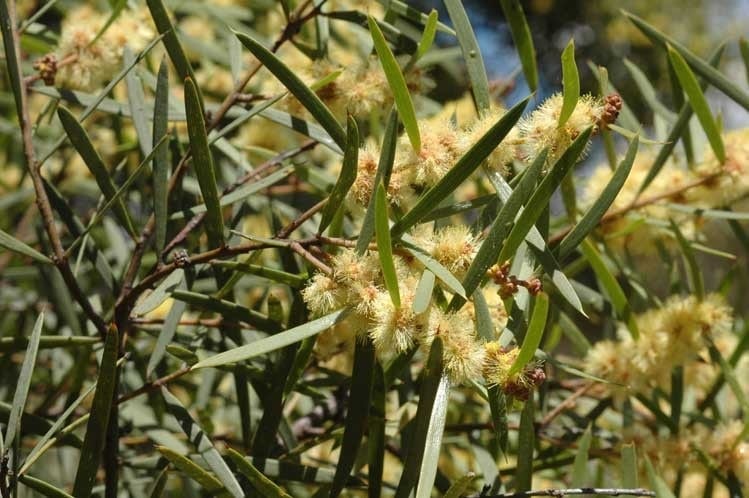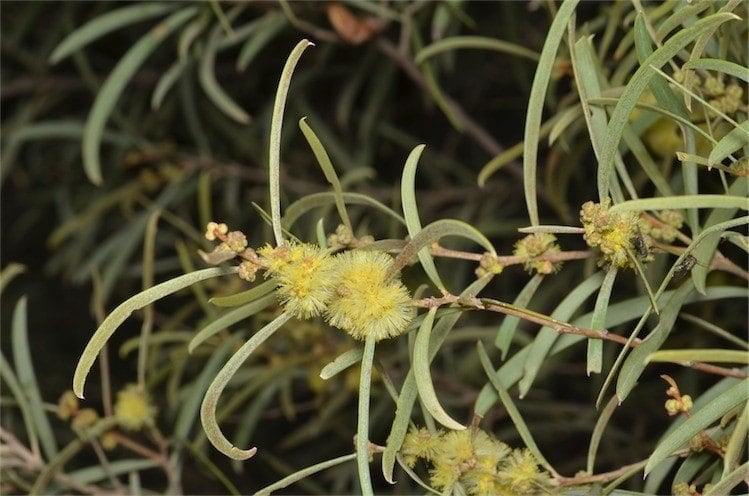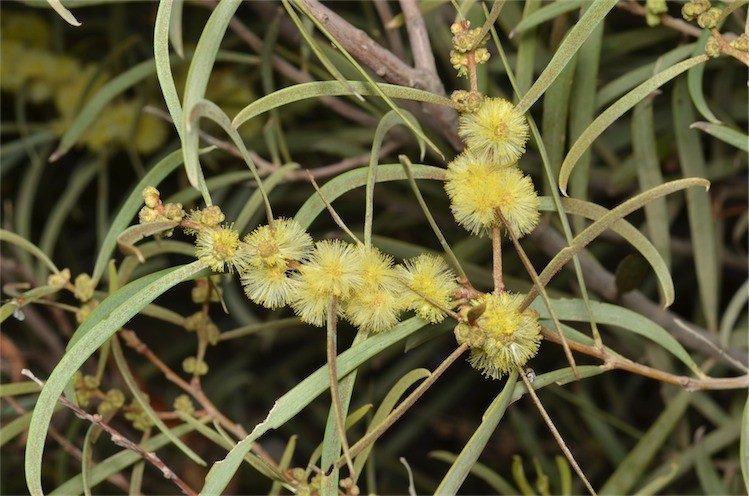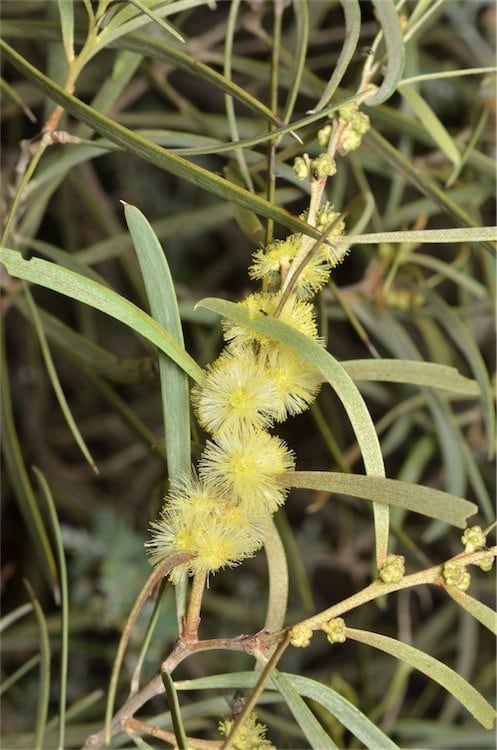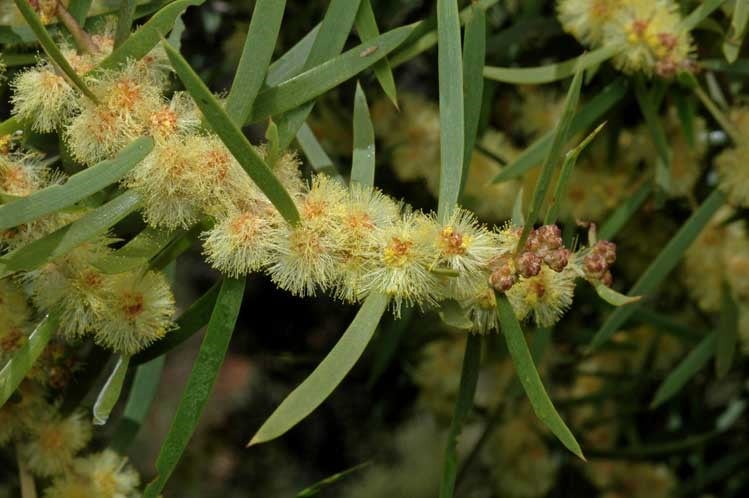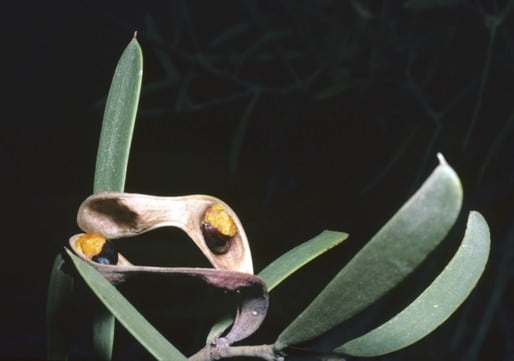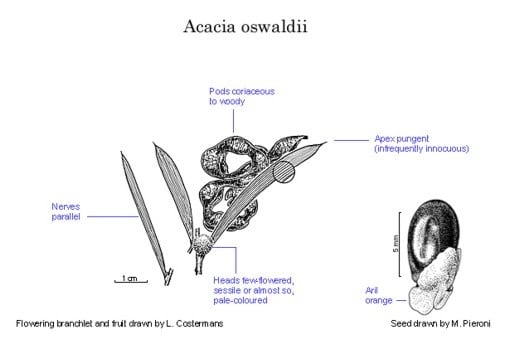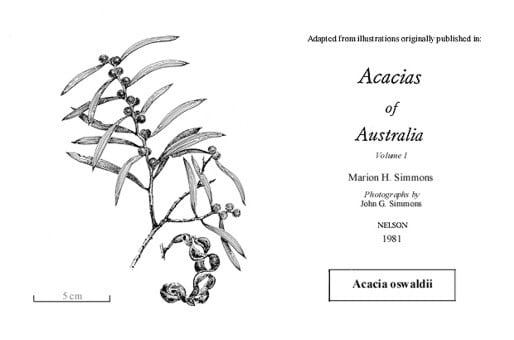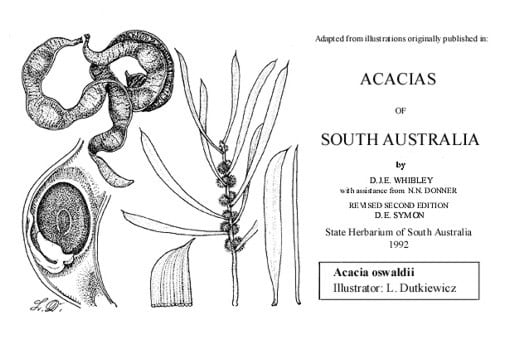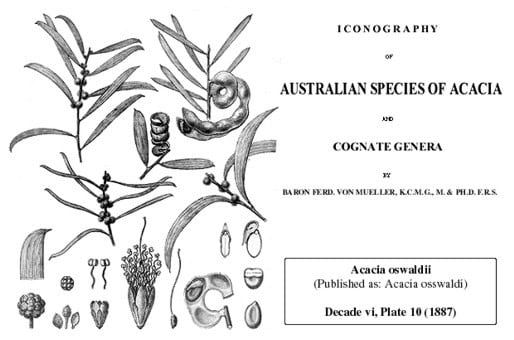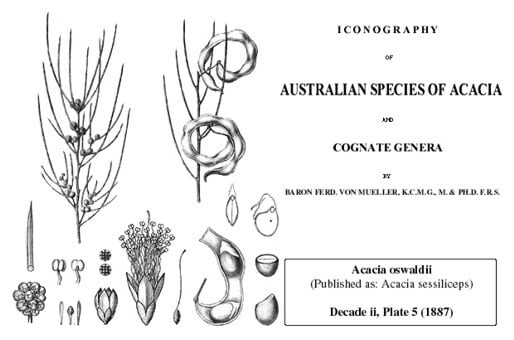Acacia oswaldii F.Muell.
WATTLE
Acacias of Australia
Common Name
Umbrella Wattle, Umbrella Bush, Miljee, Nelia, Middia, Curly Yarran, Whyacka and many others
Family
Fabaceae
Distribution
Widespread and scattered in arid, semi-arid and subtropical areas in all mainland States S of lat. 19°S.
Description
Shrub or tree 2–8 m high. Branchlets terete, glabrous, appressed-puberulous or tomentulose, typically with many red resinous micro-hairs. Phyllodes spreading to erect, linear, narrowly elliptic or narrowly oblong-elliptic, straight to recurved, terete to flat, (1–) 2.5–10 (–12) cm long, (1–) 3–15 mm wide, acute to acuminate, or obtuse and mucronate, coarsely to sharply pungent or innocuous, coriaceous to rigid, occasionally ±glaucous, glabrous (hairy when young), with 3–6 distant raised main nerves and with nearly as prominent secondary nerves occasionally anastomosing; gland basal. Inflorescences simple, 2 per axil; peduncles 0–0.8 (–2) mm long; heads depressed globular, 4.5–5 mm diam., 4–16-flowered, pale yellow. Flowers 5-merous; sepals 1/4–2/3-united. Pods linear, openly coiled or twisted, to 31 cm long, 5–12 mm wide, coriaceous to woody, minutely appressed-puberulous and (when young) with many clumps of red micro-hairs. Seeds longitudinal, oblong-elliptic, 6–8 mm long, glossy, dark brown; aril broad and fleshy, yellow-orange.
Habitat
Mainly growing in calcareous sands or loam.
Specimens
W.A.: 3.2 km N of Cundeelee Mission, N of Zanthus, A.S.George 6000 (CANB, PERTH). N.T.: 6.4 km S of Alice Springs, D.J.Nelson 2251 (PERTH). S.A.: on Mt Hopeless Rd, R.H.Kuchel 2605 (PERTH). Qld: 14 km from Springsure on road to Arcturus Downs, B.O’Keeffe 862 (BRI, PERTH). N.S.W.: 6.3 km NNE of Coolamon Post Office on Temora Rd, R.Coveny 11996 & P.Hind (NSW, PERTH). Vic.: c. 2 km SE of Mt Crozier, M.G.Corrick 6645, P.S.Short & B.A.Fuhrer (MEL, PERTH).
Notes
A transcontinental species with many variations but none of sufficient importance and discontinuity to recognise infraspecific categories (see R.S.Cowan & B.R.Maslin, Nuytsia 12: 426–428 (1999) for full discussions of variation and of synonymy). The phyllodes are especially variable in form, from flat to terete and elliptic to linear or oblong, with the apex often pungent, but sometimes only acute, or obtuse and innocuous (e.g. B.R.Maslin 5378, PERTH and P.K.Latz 5718, BRI, DNA, PERTH). Some specimens have golden or silvery-sericeous new shoots that lack the reddish resin hairs that normally characterise the species. A dwarf variant c. 2 m tall with short phyllodes (1–2.5 cm long) occurs near Lake Moore, W.A. It is likely that future studies will show that A. sessiliceps should be reinstated.
The relatives of A. oswaldii are problematic, but it is possibly closest to A. lanigera which is a small shrub with woolly branchlets, more numerously-flowered heads, smaller pods and smaller seeds lacking the large, colourful aril of A. oswaldii. The relationship of the species is surely not very close to the microneurous group of species within which G.Bentham, Fl. Austral. 2: 384 (1864), included it.
FOA Reference
Data derived from Flora of Australia Volumes 11A (2001), 11B (2001) and 12 (1998), products of ABRS, ©Commonwealth of Australia
Author
B.R.Maslin
R.S.Cowan
Minor edits by B.R.Maslin & J.Reid
This identification key and fact sheets are available as a mobile application:
URL: https://apps.lucidcentral.org/wattle/
© Copyright 2018. All rights reserved.
